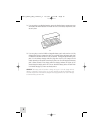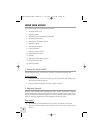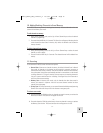
33
VHF55S INTRODUCTION
The Humminbird® VHF55S represents state-of-the-art high tech VHF Handheld engineering, and
is skillfully designed and constructed with the finest components. It is constructed to commercial-
grade standards to give you clear, reliable communication.
The Humminbird® VHF55S is available in three different versions:
• VHF55S.
• VHF55SC Camouflage.
• VHF55S Plus.
HOW VHF WORKS
The most popular method of communicating with other boats is via very high frequency (VHF)
radio. In technical terms, this is similar to the way that commercial radio stations transmit. VHF
equipment is relatively simple, and can therefore be compact and low cost.
To ensure that maritime users do not cause interference for other radio users, a part of the radio
spectrum has been allocated specifically to this group of users. These reserved frequencies have
been numbered; for example, Channel 16 (usually abbreviated Ch16) actually refers to a
frequency of 156.800 mHz.
Because radio does not recognize geographic or political boundaries, and to make sure that boats
traveling on international voyages can always communicate, the VHF marine band is the same
worldwide. There are 55 international marine channels, a similar number of private channels
(allocated on a local basis to commercial organizations) and some other unique national channels.
The United States and Canada employ a slightly different application of marine channels, using
the same frequencies but allocating more simplex (one-way) rather than duplex (two-way)
channels.
National channels include WX (weather) channels in the U.S., fishing channels in Norway and the
marina channels M and M2 in the U.K. To make sure that your radio is fitted with the correct local
channels, be sure to purchase type-approved equipment in the country of intended use.
25931_Radio_Man_531460-1_A 10/7/05 9:35 AM Page 4


















